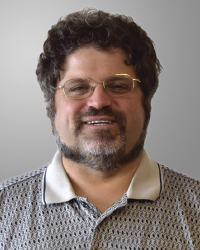 With the launch of BioPhotonics in the fall of 1994, its publishers set out to create what no other magazine had done before: a forum for in-depth reporting on photonics solutions for the medical and biotechnology disciplines. The magazine would become a resource for physicians, researchers, and technicians who wished to learn more about such solutions in the areas of diagnostics, analytics, and therapeutics.
With the launch of BioPhotonics in the fall of 1994, its publishers set out to create what no other magazine had done before: a forum for in-depth reporting on photonics solutions for the medical and biotechnology disciplines. The magazine would become a resource for physicians, researchers, and technicians who wished to learn more about such solutions in the areas of diagnostics, analytics, and therapeutics.
Then-publisher Wendy A. Laurin wrote in BioPhotonics’ inaugural editorial, “Conspicuously lacking, and plainly needed, was an information source that could serve as a bridge among the medical communities, government agencies, academia, and the biotechnology industry, sharing on a broad scale new knowledge about how this innovative technology can most advantageously be put to use.
“Realizing that we might be able to create such a bridge, we conducted hundreds of phone interviews with leaders in the medical and biotechnology fields,” she wrote. “One dominant theme quickly became apparent: When these key people wanted to find out what photonics could do for them, they had to comb through many sources, often to little avail.”
To fill the gap in photonics coverage, we introduced BioPhotonics. Early editions have become time capsules of sorts — a window into the emerging areas of medicine at the time, such as gene therapy and the growing use of lasers in dermatology, urology, and beyond. News accounts touted the use of optical fiber lasers that emitted in the blue region and were uniquely suited for the early detection of AIDS in blood cells. Stories announced the construction of the first centers to feature lasik, the then-new laser refractive surgery approach to treat nearsightedness — a technique that has since been performed on tens of millions of patients worldwide.
Years before the debut of CMOS or sCMOS sensors, the CCD sensors for biomedical imaging promised profound changes for the world of bioimaging. The year 1994 marked the very early days of telemedicine, which then stood on the precipice of the telecommunications boom that we experienced in the latter part of the decade. In an article from the first issue of BioPhotonics, titled “Bringing the Hospital to the Patient,” special correspondent Susan Wheeler wrote, “If you drive along the information superhighway, watch out for ‘under construction’ signs at the telemedicine exit.”
We’ve come a long way.
Consider advancements such as optogenetics — a technique that uses light to excite neural networks and that was developed in 2005 and patented a decade later. And also consider the Nobel Prize-winning achievement of superresolution microscopy, which captures detail beyond the Abbe limit.
What hasn’t changed is our commitment to BioPhotonics’ original mission. I invite you to learn more about the exciting developments featured in this issue. Its authors reveal how lipid expansion microscopy is unlocking the mysteries of cellular signaling, how lasers are reducing the risk of infection from medical implants, how holographic illumination is exciting dormant neural networks, and, finally, how researchers are using infrared spectroscopy to capture cellular dynamics.
And this edition’s “Biopinion” shares how clinicians are engaging light-based therapeutics such as photodynamic therapy and using hand-held instruments to treat patients in rural India who are suffering from oral cancer.
For nearly three decades, our readers have learned about the advancements that biophotonics makes possible and how it is changing the face of medicine and the life sciences.
Enjoy the issue!
